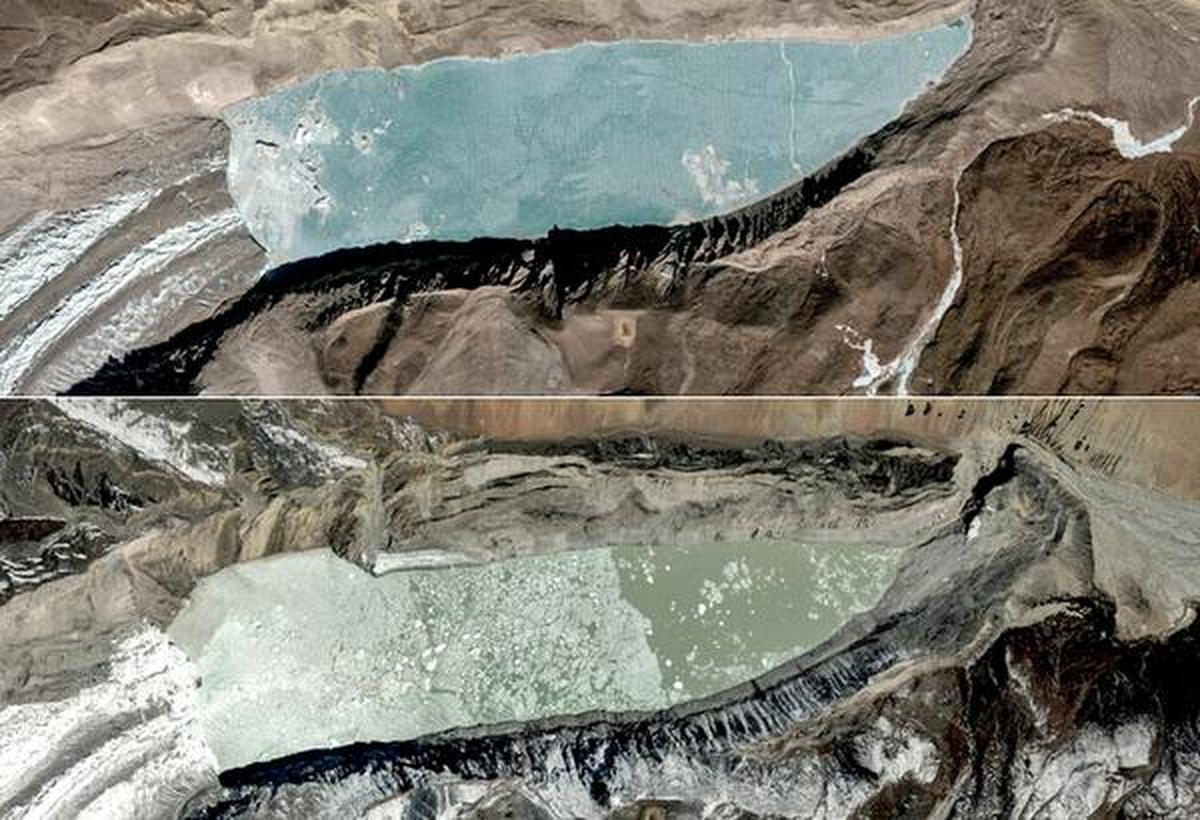The Teesta Valley has only six months before the 2025 monsoon aggravates the damage wrought by the disastrous glacial lake outburst flood (GLOF) in October 2023, two community-based green Himalayan organisations have warned the government.
The 2023 GLOF and the subsequent NHPC, Ltd. power project dam breach claimed more than a hundred lives, disrupted livelihoods, and destroyed assets and critical military installations, apart from ecological devastation in its wake across Sikkim and West Bengal.
The two governments have allegedly been working in silos, concerned only about areas within their respective boundaries instead of treating it as a larger issue at a landscape level.

“With only six months remaining before the 2025 monsoon, there is an urgent need to implement both structural and non-structural mitigation measures throughout the Teesta Valley,” a memorandum by the Kalimpong-based Praful Rao of ‘Save The Hills’ and Roshan Rai of the Darjeeling Himalaya Initiative (DHI) said on November 18. “The implementation of effective measures in Sikkim and West Bengal now can significantly reduce the impact of future floods.”
A copy each was addressed to Prime Minister Narendra Modi, Sikkim Chief Minister Prem Singh Tamang, and his West Bengal counterpart Mamata Banerjee. The memorandum bears the signatures of 290 citizens working to raise awareness about landslides in the Darjeeling-Sikkim Himalaya.
“Central assistance will be imperative because the scale and complexity of the problem cannot be tackled at the State level,” they said.
Call for a joint committee
The duo lamented that the response from the State and Central authorities to the GLOF has been inadequate despite the scale of the disaster, especially for long-term rehabilitation and restorative interventions at the relief, infrastructure, and ecological levels.
They said the Teesta River poses serious threats to both Sikkim and West Bengal each monsoon season. The two States thus need to approach disasters at a landscape level instead of limiting their focus to within their respective boundaries.

From 17 ha in 1977, the South Lhonak Lake expanded to 167 ha by 2023. The image shows satellite views of the lake before (top) and after it burst its banks on October 3, 2023, resulting in the GLOF.
| Photo Credit:
Maxar/Reuters
“A Sikkim-West Bengal joint committee could address common issues and implement coordinated disaster management strategies that benefit both the States and areas beyond,” Mr Rao, also a member of the DHI, told The Hindu.
Mr Rao and Mr Rai suggested the formation of a task force of experts drawn from geo-hydrology, environmental science, engineering, and sociology to address the multiple challenges brought about by the GLOF. “This task force must develop a comprehensive action plan that includes technical, financial, and social solutions for restoring and fortifying the region,” they said.
They cited the case of 65 families in the Teesta Valley, in the Kalimpong district of West Bengal, that were displaced by the GLOF-induced flash floods and continue to reside in relief camps.
“For these people who depended on the river for their survival, displacement has worsened their economic stability, and everyday existence becomes a struggle for survival. Prolonged uncertainty worsens their mental distress, highlighting the urgent need for targeted interventions to restore their houses and livelihoods,” they said.
They added that several areas along the Teesta River have been sinking since the 2023 disaster. Among the most vulnerable is Teesta Bazaar in West Bengal.
“The NH10, the lifeline of Kalimpong and Sikkim, remains perilously unstable for much of the monsoon season and diversion of traffic via alternative routes adds avoidable burden on transport services, infrastructure as well as the communities along the route,” they said.
“These vulnerabilities were exposed again almost throughout the 2024 monsoon season and have severely reduced the tourist traffic to the region impacting the economy of the Sikkim and Darjeeling Himalayas.”

Stress on land-use planning
Mr Rao and Mr Rai suggested sustainable engineering solutions to protect low-lying areas from river overflow and re-channelising the Teesta River — disrupted by debris built up by the GLOF — to prevent further damage to urban areas and infrastructure. The NHPC’s technical expertise can be instrumental in deepening, widening, and redirecting the river to safer channels, they added.
The duo underscored the need to repair and strengthen damaged roads and bridges that have cut off many communities, hindering both economic activity and disaster relief efforts. They also suggested the reinforcement of evacuation centres and relief camps with backup solar power to ensure they remain operational in the event of future emergencies.
The duo stressed land-use planning and zoning as “certain low-lying areas will remain high-risk zones even with structural protections” in place. “These areas should be designated for potential evacuation and resettlement of at-risk communities. Adequate compensation as decided by the expert group should be provided to affected victims and necessary support given to those relocating,” they said.
“Non-structural mitigation measures such as early warning systems and communication networks are no less important,” Mr Rao said.
“Installing automated flood early warning systems that deliver real-time alerts through sirens and mobile networks is crucial. Backup communication methods, such as ham radios and walkie-talkies operated by trained personnel, should also be implemented to ensure effective communication during emergencies,” he said.
Other measures suggested included awareness and risk management campaigns to build capacities and resilience during disasters, post-disaster financial recovery support, and an aggressive afforestation programme to restore the valley’s ecosystem, prevent soil erosion, and help regulate the river’s flow.
Published – November 20, 2024 05:30 am IST
